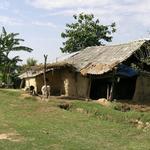Inter-generational Determinants of Migration Decisions: The Case of International Labour Migration from Nepal
The article explores the deep determinants of migration decisions, with a focus on what appears to be a particularly profitable pathway out of poverty: overseas labour migration. To what extent is this choice constrained by access to economic resources, in contrast to variations in preferences or perceived costs of migration? We use previous migration choices as an indicator of preferences for migration. We find that households of early in-migrants to the frontier area we study in Nepal are more likely to have international labour migrants today than late in-migrants. This indicates that in-migrants need a generation, or more, to settle in the new location before sending household members to work overseas. Present migration decisions are also restricted by the household's land ownership, which in turn is a function of the land owned by the previous generation.
Magnus Hatlebakk







